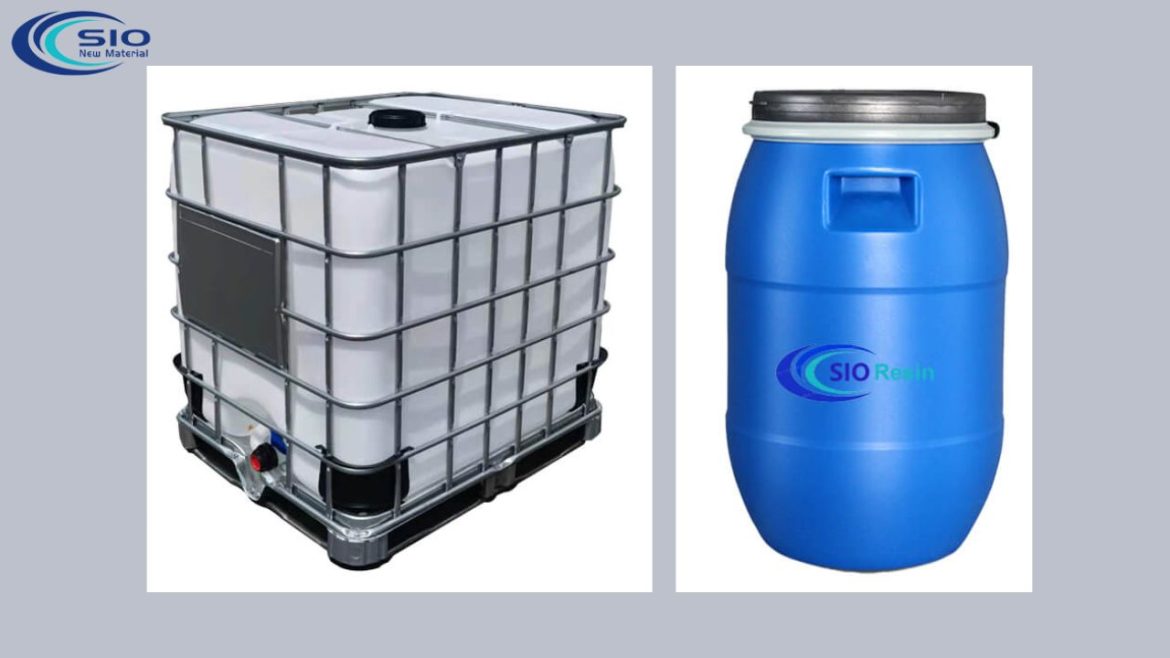The environment of sophisticated coatings and resins requires the employment of performance-promoting additives now more than ever. In particular, the polyfunctional aziridine crosslinker is relatively efficient in terms of providing an increase in the durability of coatings, rigidity, and shelf-life. They are also not some other additive since these crosslinkers play very crucial roles in the modern waterborne coating system, since they make significant changes to the performance properties of coating systems. With the increased need by industries to employ more sustainable and high-performing solutions, the use of polyfunctional aziridine crosslinkers attracted more and more attention due to the unusual chemistry of the product and outstanding outcomes.
Special Molecular Structure to Improve Crosslinking
The difference of the polyfunctional aziridine crosslinkers starts with their molecular structure. Such crosslinkers possess numerous reactive aziridine sites to allow the crosslinker to covalently bind with functional groups of the carboxylic acid in resins such as acrylics and polyurethanes. The dense three-dimensional structure formed by such a kind of molecular interaction enhances the stability of the film (mechanically and chemically) as acquired. In contrast to most traditional crosslinkers that have only a few reactive groups and thus bonding capabilities, the resulting matrix of multiple reactive sites of the polyfunctional aziridine is much stronger and holds up well under stress.
High Waterborne Coatings Performance
The fact that polyfunctional aziridine crosslinkers can be used in waterborne coating systems is one of the main factors why manufacturers use them. Due to the increasingly strict environmental control, water-based coatings are substituting for the solvent-based ones. Nevertheless, the water-based systems also have difficulties in competing with the behavior of the solvent-based ones, at least until they are improved using appropriate crosslinkers. Polyfunctional aziridines such as the SioResin H-1001 enhance film hardness, moisture, and abrasion resistance without delving into eco-unterminated parameters. They have great water solubility, providing ease of addition to water-based formulations, being environmentally compliant as well as yielding quality to coating.
Room Temperature Reactivity and Fast Curing
The other distinct benefit of polyfunctional aziridines is that room-temperature reactions can be achieved using them. They connect with carboxyl found in resin systems without the application of high temperatures. This enables the possibility of efficacious curing at ambient conditions, and this is the main advantage of product manufacturers intending to save energy, or for sensitive substrates. Moreover, an increase in the reaction speed is possible upon gentle heating (usually 60 to 80 °C), so that the reaction time does not exist as the increased speed of the reaction may occur when needed. This bi-flexibility suits them well in high-speed industrial processes, as well as in small-scale processes where precise temperature control is not attainable.
Cosmetic and Defensive Do-Over
The polyfunctional aziridine crosslinkers used in coating can be considered as coatings with enhanced durability, and they also provide visual appeal in the future. These cross-linkers do not allow imperfections like blistering, chalking, or discoloring that could be obtained through the permeation of moisture or sunlight. Whereas with most applications, such as e.g. in the car industry, in electronics, or wood coatings, surface pick is just as important as structural properties, by introducing aziridine crosslinkers, a long-term reliability and quality of finish can be ensured. An increase in gloss, stain resistance, and surface hardness implies a more professional and permanent look.
Multifunctionality in Resin Systems
Multi-purpose Aziridines are very versatile. Although they are used mainly in waterborne acrylic and polyurethane systems, they work fine in cellulose, epoxy, and other resin-based coatings. This cross-compatibility provides manufacturers with the opportunity to apply the same crosslinker in various products (lines), which simplifies inventory management and makes the formulations. Whichever the application is as a primer, topcoat, or intermediate, the polyfunctional aziridines would work with different application requirements and impart the same improvements in performance.
Proper Handling by Safe Use and Long Shelf Life
Although polyfunctional aziridines are potent chemicals, they can be handled safely. There are products that are also stable at recommended storage conditions and consequently have long shelf lives when stored at between 5 °C and 35 °C in closed containers like H-1001. Such are usually mixed with some water and added to the slurry, and individual mixtures are frequently reusable as components of further batches. All of this makes them affordable and convenient to the formulators, especially when they are contrasted against some highly reactive or unstable crosslinking agents.
Conclusion
Poly-functional aziridine crosslinkers have a special position in the coating market as an outstanding general-purpose crosslinker compatible with both water and solvent-based systems and which has structural versatility. Their potency in curing faster, increasing resistance properties, and preserving the looks of the surface makes them useful to the manufacturers who are in need of improving the quality of the coating without being less environmentally responsible. The unique properties of polyfunctional aziridine crosslinkers will therefore be at the forefront as the modern formulation science evolves, given the further rising demands of durable, sustainable, and high-performance coatings.

